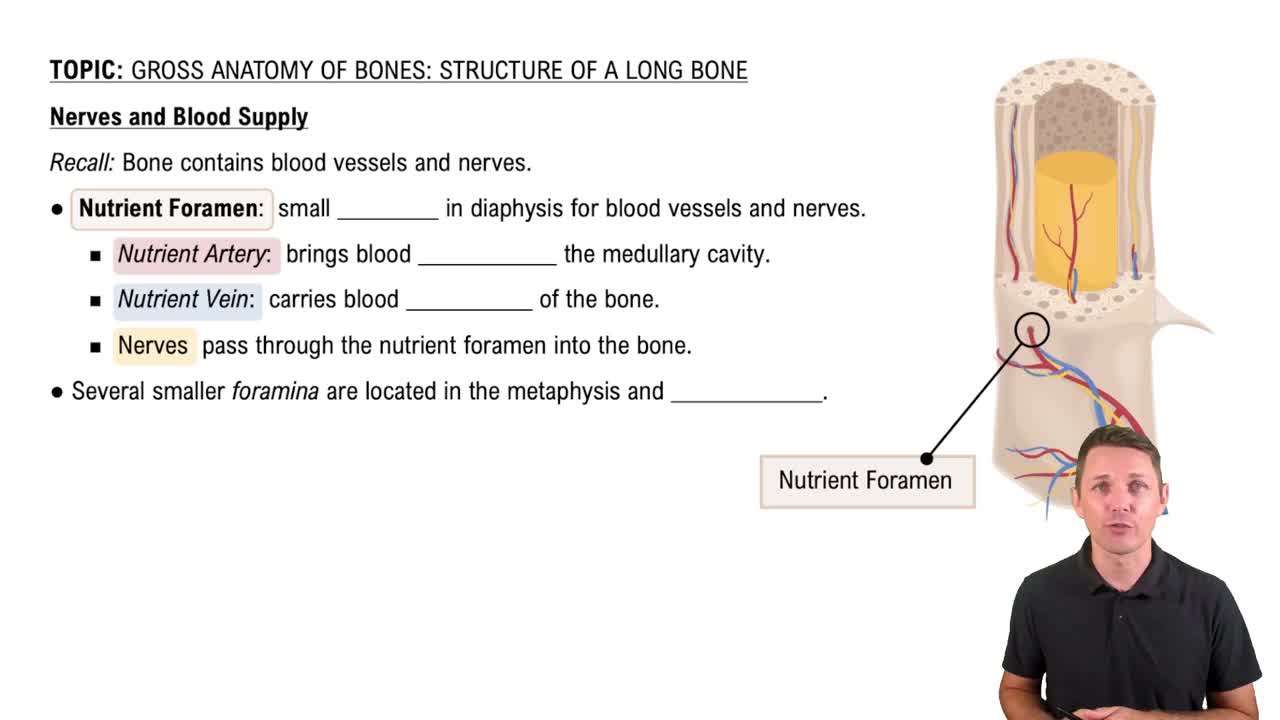Define each of the following terms in your own words, using 20 or fewer words.
a. Peripheral nerve
 Verified step by step guidance
Verified step by step guidance



Define each of the following terms in your own words, using 20 or fewer words.
a. Peripheral nerve
Explain why you lose both motor and sensory function of a part of your body when a spinal nerve is numbed with anesthetic agents.
When Mr. Williams goes to the emergency department with pain in the area along the midline of the diaphragm, he worries he is having a heart attack. Could the pain be related to his heart? Could it be related to any other organ(s)? Explain.
Define each of the following terms in your own words, using 20 or fewer words.
c. Posterior root ganglion
First, write the Roman numeral that corresponds to each named cranial nerve (after the abbreviation CN). Second, match the cranial nerve with its correct function from the column on the right.
CN____
______Vestibulocochlear nerve
CN____
______Trigeminal nerve
CN____
_______Hypoglossal nerve
CN____
_______Abducens nerve
CN____
_______Vagus nerve
CN____
_______Olfactory nerve
CN____
_______Accessory nerve
CN____
_______Oculomotor nerve
CN____
_______Facial nerve
CN____
_______Optic nerve
CN____
_______Glossopharyngeal nerve
CN____
_______Trochlear nerve
a. Motor to the lateral rectus muscle
b. Motor to the muscles of facial expression; lacrimation; salivation; taste to the anterior two-thirds of the tongue
c. Sense of smell
d. Motor to the muscles for swallowing; salivation; taste to the posterior one-third of the tongue; somatic sensation from the throat
e. Senses of hearing and equilibrium
f. Motor to the superior oblique muscle
g. Motor to the tongue
h. Motor to the sternocleidomastoid and trapezius muscles
i. Sense of vision
j. Motor to muscles of swallowing and speaking; parasympathetic innervation to thoracic and abdominal viscera; sense of taste from the throat
k. Sensory to the face; motor to the muscles of mastication
l. Motor to four of six extrinsic eye muscles; constricts the pupil; changes the shape of the lens; opens the eyelid
Maria is a 3-year-old who has been diagnosed with CIPA, or congenital insensitivity to pain with anhidrosis. This disease results from a genetic mutation that causes essentially all general sensory neurons to not function properly. What types of sensations will Maria be unable to detect (be specific)? Predict what problems she might face from her condition.